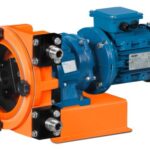An instrument datasheet is a document that provides detailed information about an instrument or device used in industrial processes. It typically includes information such as the manufacturer, model number, physical dimensions, operating parameters, and electrical specifications.
The datasheet will often also contain information about the materials used in the construction of the instrument, its accuracy and precision, the types of signals it can measure or generate, and its range of operating temperatures and pressures. Other important details may include the instrument’s power requirements, response time, and any special features or options that are available.
Instrument datasheets are critical in the design, installation, and operation of industrial processes, as they provide engineers and technicians with the information they need to select the right instrument for a specific application, understand its capabilities and limitations, and ensure it is installed and operated correctly.
Purposes of an Instrument Datasheet
The purposes of an instrument datasheet are:
Selection of instruments: The datasheet provides detailed information about an instrument or device used in industrial processes, enabling engineers and technicians to select the right instrument for a specific application based on its capabilities and limitations.
Design of the process: The datasheet provides important information about the instrument’s physical dimensions, accuracy, precision, and operating parameters. This information can be used in the design of the process, including the selection of piping and instrumentation diagrams (P&IDs) and other process design documents.
Installation and commissioning: The datasheet provides critical information about the instrument’s electrical specifications, power requirements, and response time. This information is necessary for the proper installation and commissioning of the instrument.
Operation and maintenance: The datasheet provides information about the instrument’s range of operating temperatures and pressures, materials of construction, and any special features or options that are available. This information is necessary for the proper operation and maintenance of the instrument, including calibration and repair.
Documentation and record-keeping: The datasheet serves as an important record of the instrument’s specifications and capabilities. It can be used for future reference, troubleshooting, and maintenance purposes, and can be included in project documentation and archives.
Documents required to prepare Instrument Datasheet
The documents required to prepare an instrument datasheet may vary depending on the specific instrument and the requirements of the project, but some common documents that may be needed include:
- Instrument specification sheet: This document provides detailed information about the instrument’s design, materials, and operating parameters.
- Instrument datasheet template: This is a blank form or template that provides a structure for organizing and presenting the information about the instrument.
- Instrument manual: This document provides detailed instructions for the installation, operation, and maintenance of the instrument.
- Piping and instrumentation diagram (P&ID): This document shows the interconnection of process equipment and the instrumentation used to control the process.
- Process flow diagram (PFD): This document shows the overall process flow and the equipment used in the process.
- Project design specifications: These documents provide information about the design criteria, equipment standards, and other project requirements.
- Industry standards and regulations: Depending on the industry and the specific application, there may be relevant industry standards and regulations that need to be followed in the design and selection of the instrument.
- Manufacturer’s product literature: This may include brochures, technical specifications, and other documentation provided by the manufacturer that describes the instrument and its capabilities.
- Previous instrument datasheets: If similar instruments have been used in previous projects, their datasheets can be used as a reference for the current project.
- Vendor Catalog, if available
How to prepare an Instrument Datasheet?
Preparing an instrument datasheet involves gathering and organizing information about the instrument or device in a structured format. Here are some general steps to follow:
Identify the purpose of the instrument: Determine the purpose of the instrument and the specific requirements it needs to meet. This will help you determine what information needs to be included in the datasheet.
Gather information about the instrument: Collect as much information about the instrument as possible from various sources, including the manufacturer’s website, technical specifications, manuals, and other relevant documentation. You may also need to consult with experts in the field to ensure you have all the necessary information.
Organize the information: Once you have gathered all the necessary information, organize it into a structured format. This may involve creating sections for different types of information, such as physical dimensions, electrical specifications, operating parameters, and special features.
Create the datasheet: Use a software program like Microsoft Excel or Google Sheets to create a table that includes all the relevant information about the instrument. Make sure the table is easy to read and understand, and use clear headings and labels to identify each section.
Review and revise: Once you have created the datasheet, review it carefully to ensure all the information is accurate and complete. Make any necessary revisions or updates, and have others review it for accuracy and completeness as well.
Distribute the datasheet: Once the datasheet is complete and accurate, distribute it to relevant stakeholders, such as engineers, technicians, and other team members involved in the project. Make sure they have access to the most up-to-date version of the datasheet and encourage them to provide feedback if they identify any issues or discrepancies.
What is included in the instrument datasheet?
The content of an instrument datasheet may vary depending on the specific instrument and the requirements of the project, but typically it includes the following information:
- General information: This section includes basic information about the instrument, such as the manufacturer’s name, model number, Tag number, and serial number.
- Physical characteristics: This section describes the physical characteristics of the instrument, such as its dimensions, weight, and materials of construction.
- Electrical specifications: This section provides information about the instrument’s electrical requirements, such as its power supply voltage, current consumption, and wiring connections.
- Operating parameters: This section describes the operating parameters of the instrument, such as its measurement range, accuracy, precision, and response time.
- Environmental specifications: This section provides information about the instrument’s operating environment, such as its temperature and pressure range, and any special environmental considerations that need to be taken into account.
- Output signals: This section describes the type of output signals that the instrument generates, such as analog or digital signals, and the format in which they are provided.
- Calibration and maintenance requirements: This section describes the calibration and maintenance requirements of the instrument, such as the recommended calibration frequency and the types of maintenance tasks that need to be performed.
- Special features and options: This section describes any special features or options that are available with the instrument, such as alarms, communication protocols, or remote monitoring capabilities.
- Safety and regulatory compliance: This section describes the safety features of the instrument, as well as any regulatory compliance requirements that need to be met.
- Accessories and spare parts: This section lists any accessories or spare parts that are available for the instrument, along with their part numbers and descriptions.
What is the difference between an instrument datasheet and an instrument specification?
An instrument datasheet and an instrument specification are related documents that provide information about an instrument, but there are some key differences between the two:
Purpose: An instrument specification is a high-level document that provides a general overview of the instrument and its capabilities, whereas an instrument datasheet is a detailed document that provides specific information about the instrument’s design, materials, and operating parameters.
Level of detail: An instrument specification is typically less detailed than an instrument datasheet, and may not include all of the technical specifications and performance characteristics of the instrument.
Content: An instrument specification usually includes a description of the instrument’s purpose and functionality, its key features and benefits, and any relevant industry standards or regulations that it must comply with. An instrument datasheet typically includes more technical details such as the instrument’s physical dimensions, electrical specifications, operating parameters, and calibration and maintenance requirements.
Use: An instrument specification is often used in the early stages of a project, such as during the design phase, to help stakeholders understand the capabilities of the instrument and how it fits into the overall system. An instrument datasheet is typically used later in the project, during the selection and procurement phase, to provide detailed information to engineers and technicians who are responsible for selecting and installing the instrument.
In summary, an instrument specification provides a high-level overview of an instrument’s capabilities, while an instrument datasheet provides detailed technical information about the instrument’s design, performance, and operating parameters.







Interesting